Systematic Review of Psychological Approaches to the Management of Neuropsychiatric Symptoms of Dementia
Abstract
Method
Search Strategy
Data Extraction Strategy
Results
Reminiscence Therapy
Validation Therapy
Reality Orientation Therapy
Cognitive Stimulation Therapy
Other Dementia-Specific Therapies
Non-Dementia-Specific Therapies
Psychological Interventions With Caregivers
Psychosocial Interventions
Sensory enhancement
Music/music therapy
Snoezelen therapy/multisensory stimulation
Other sensory stimulation
Simulated presence therapy
Structured activity
Therapeutic activity programs
Montessori activities
Exercise
Social interaction
Decreased sensory stimulation
Environmental manipulation
Visually complex environments
Mirrors
Signposting
Other environmental manipulations
Group living
Unlocking doors
Staff education in managing behavioral problems
Environmental interventions combined with staff education
Discussion
Effective Psychological Therapies
What Interventions Need More Evidence?
Which Interventions Were Ineffective?
Conclusions

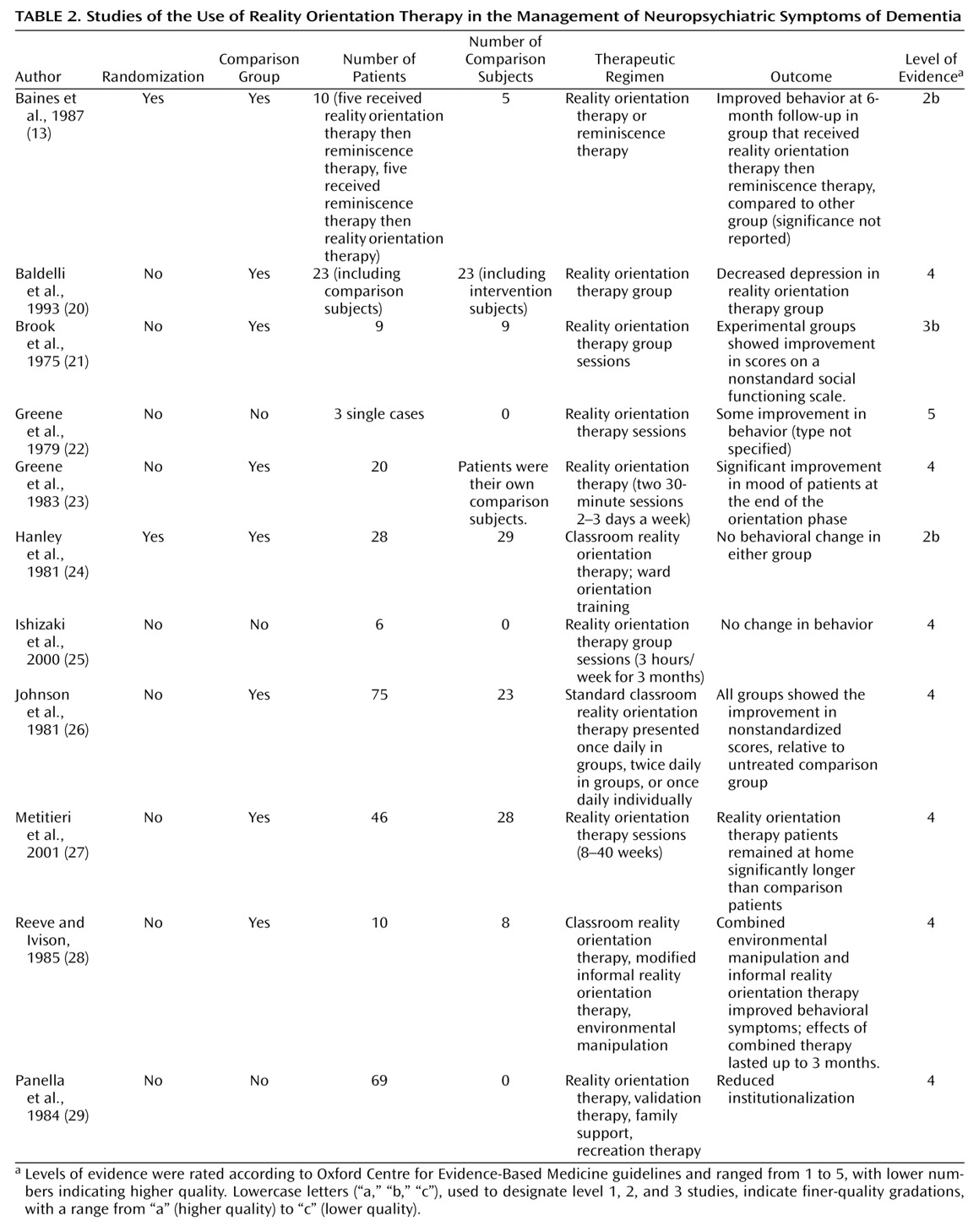
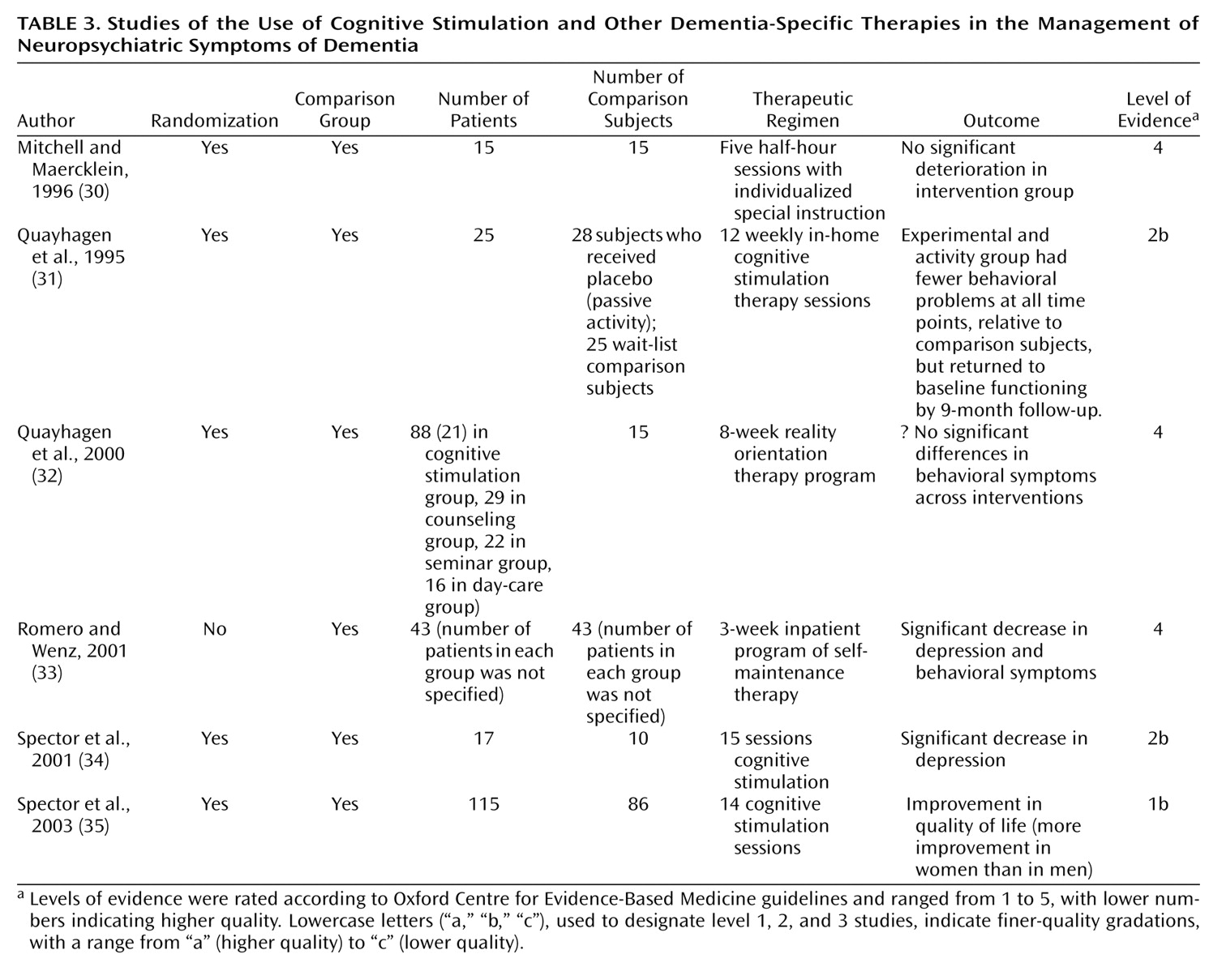

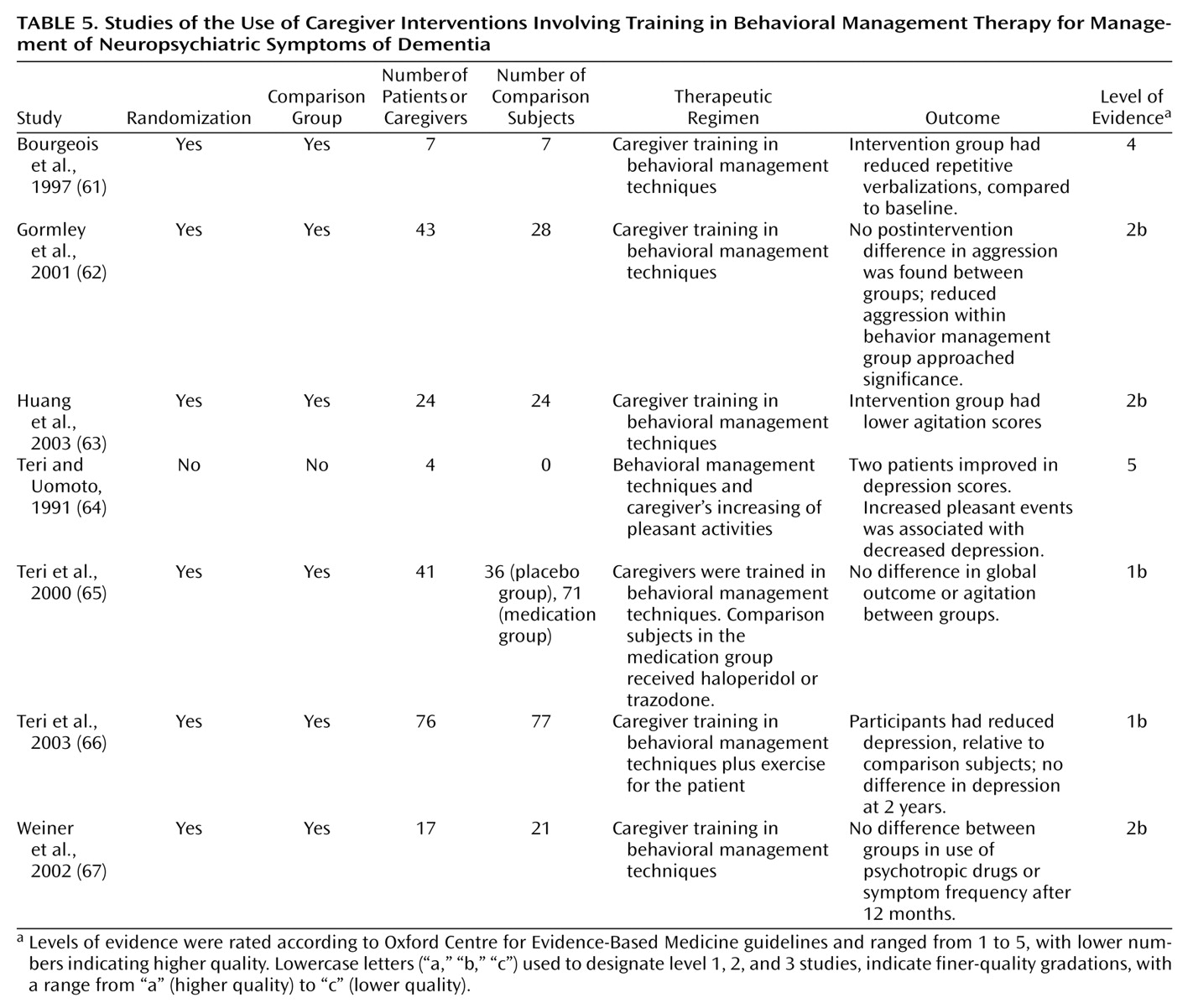

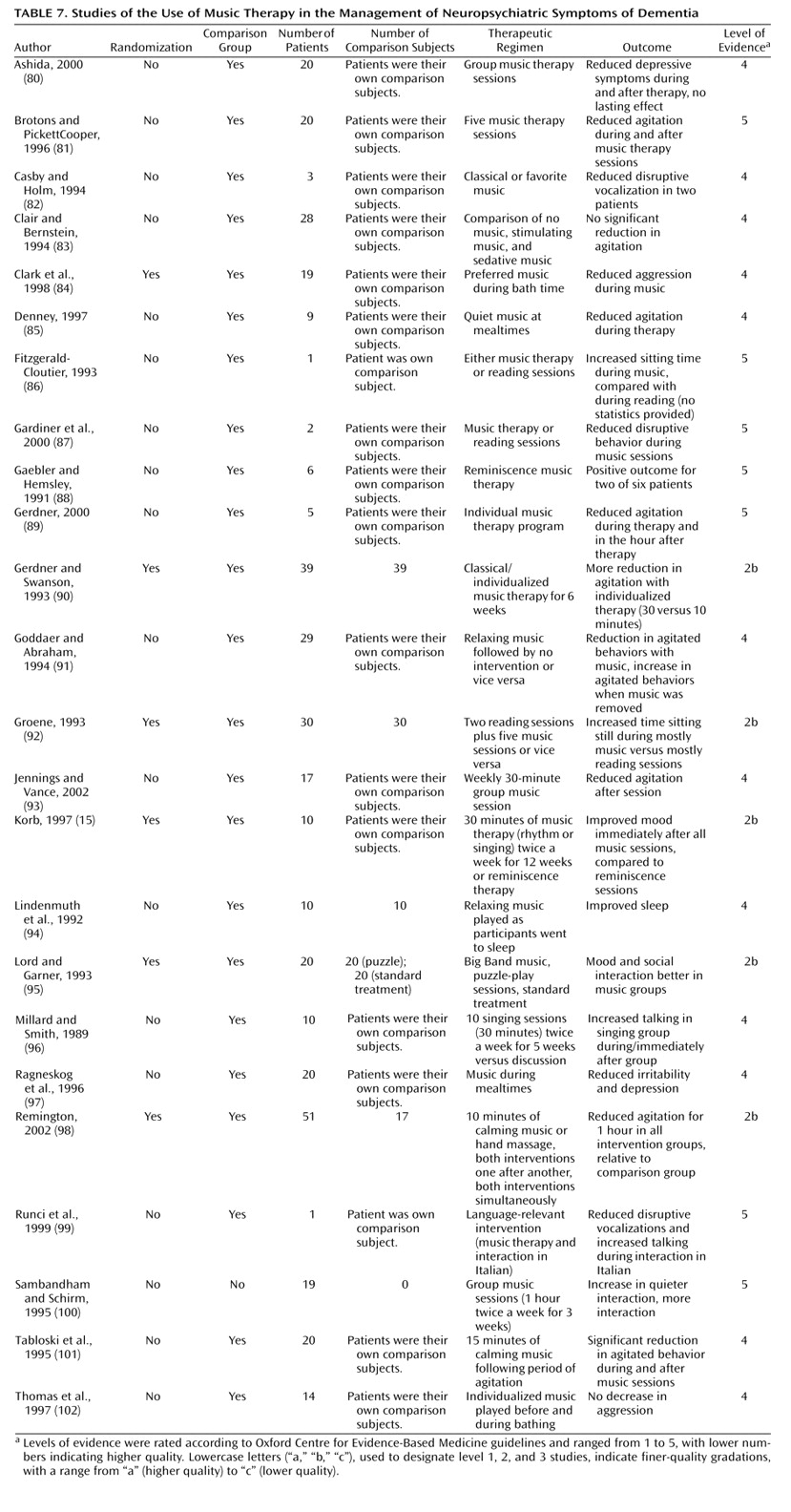
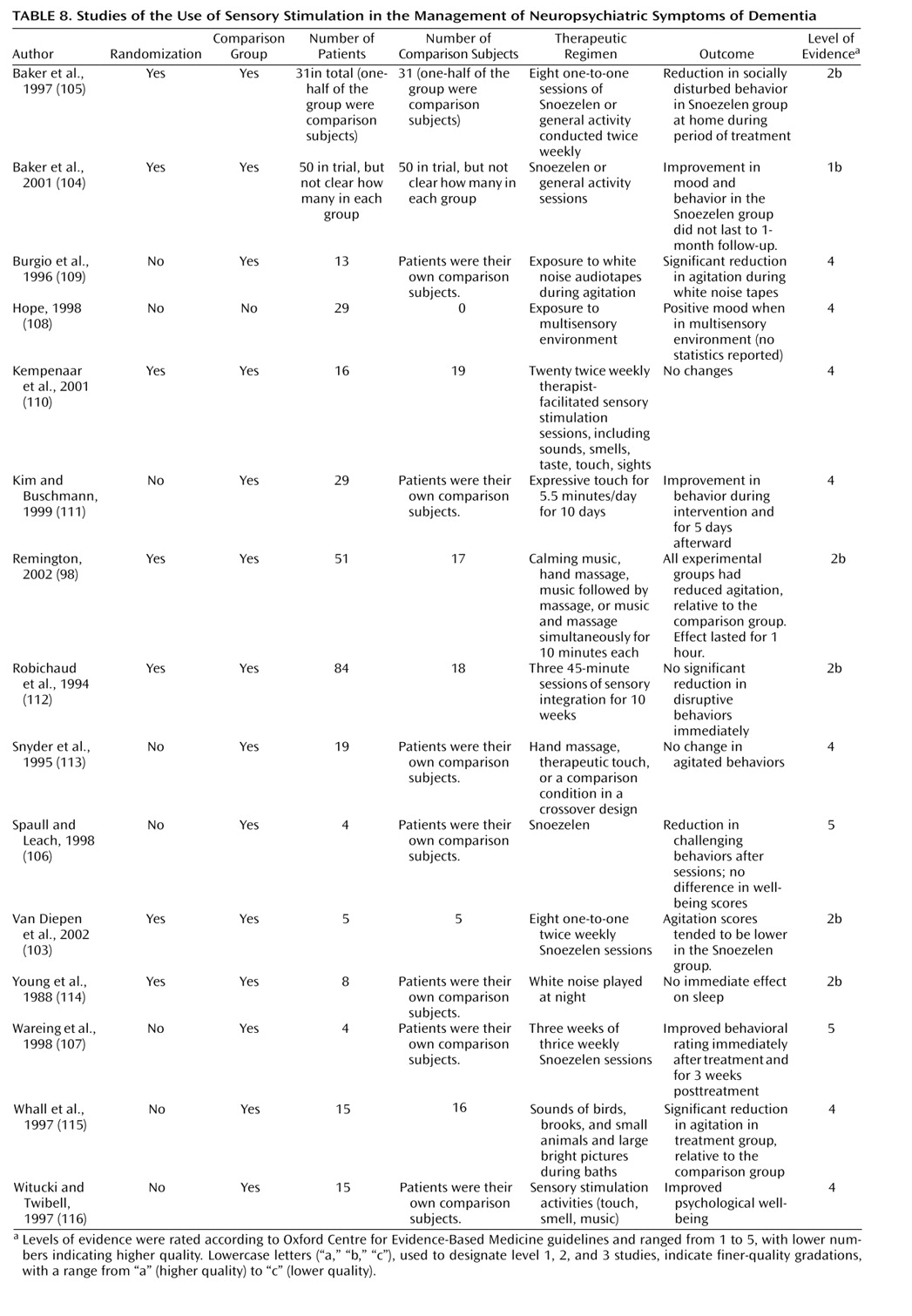
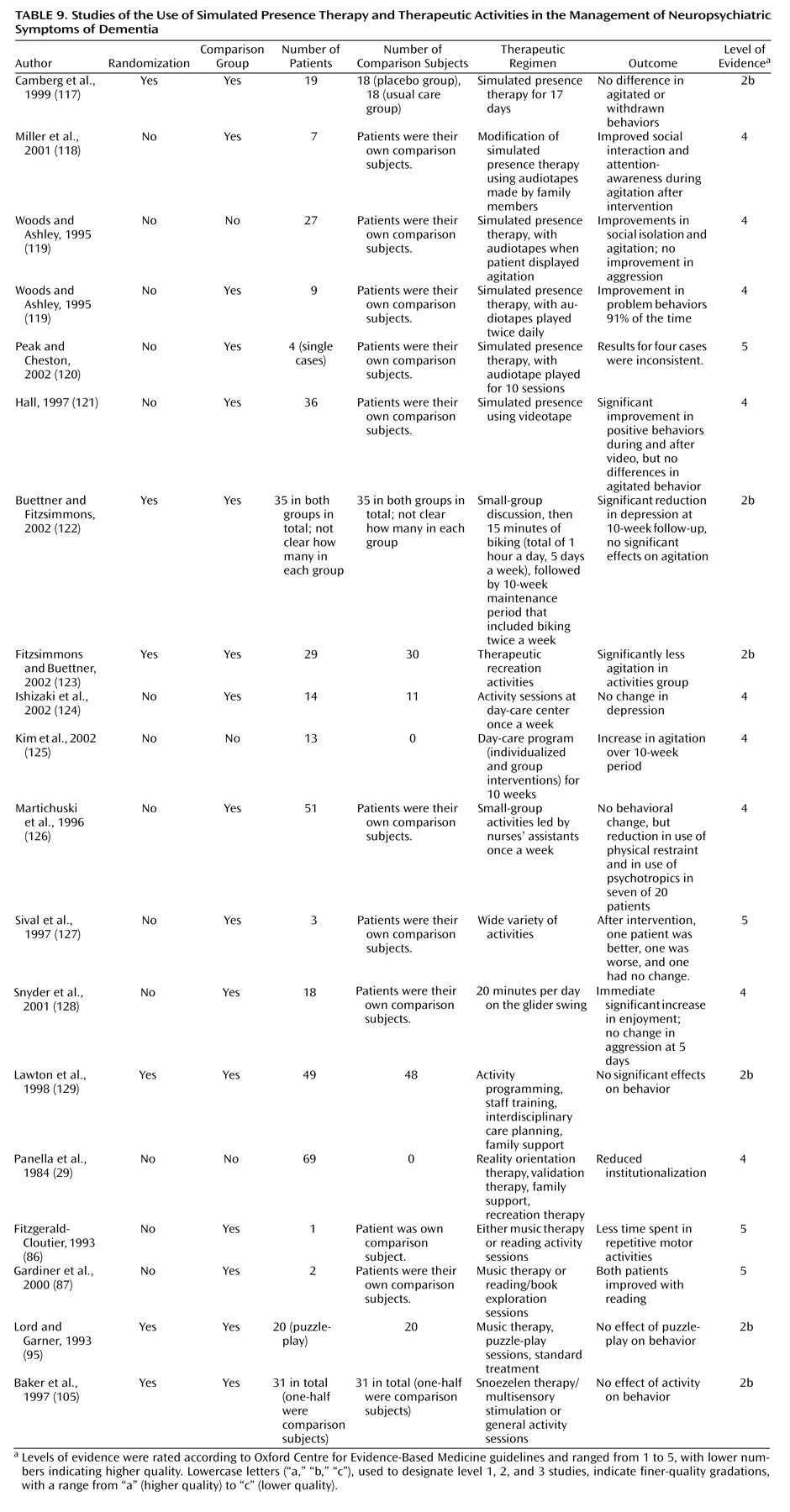
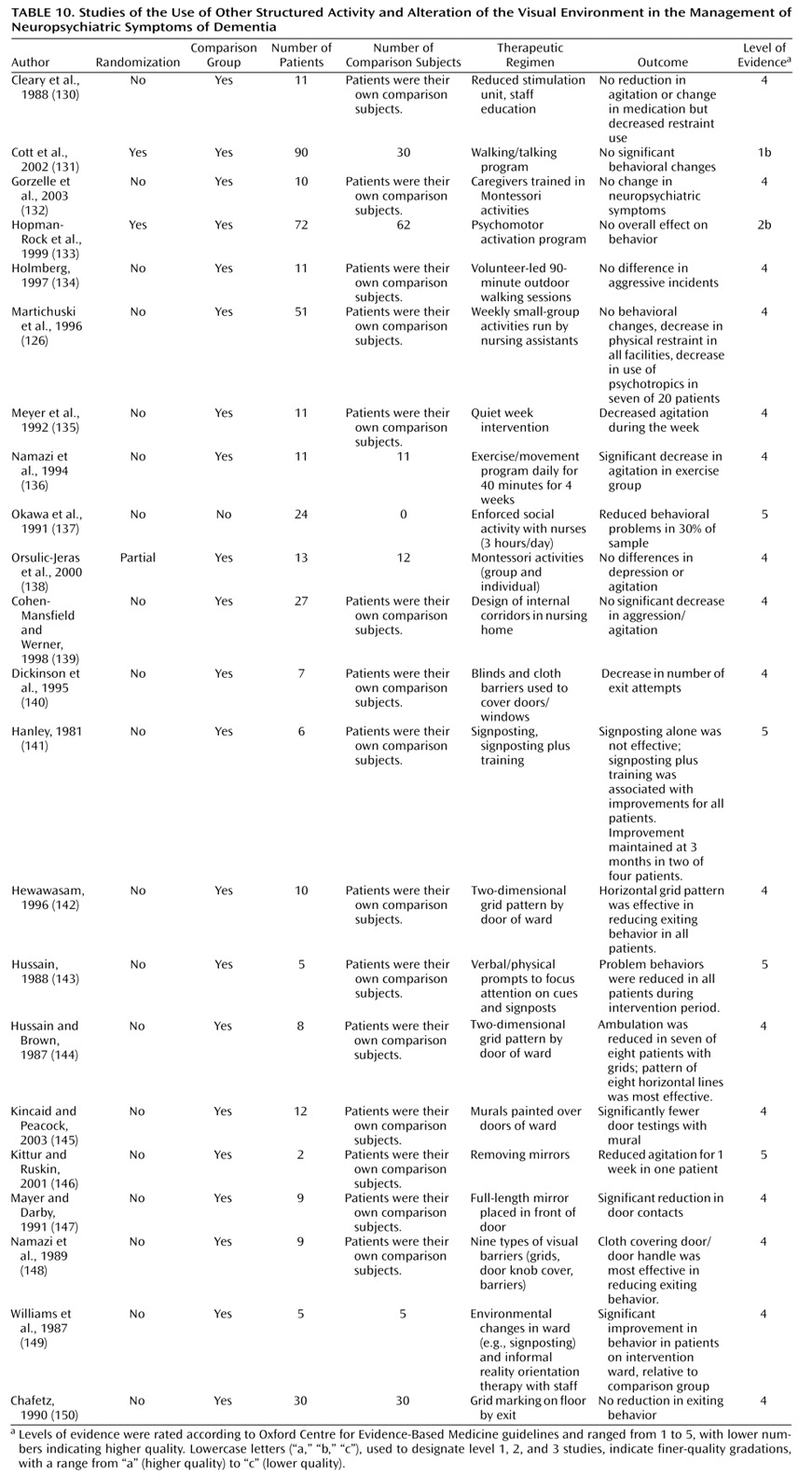
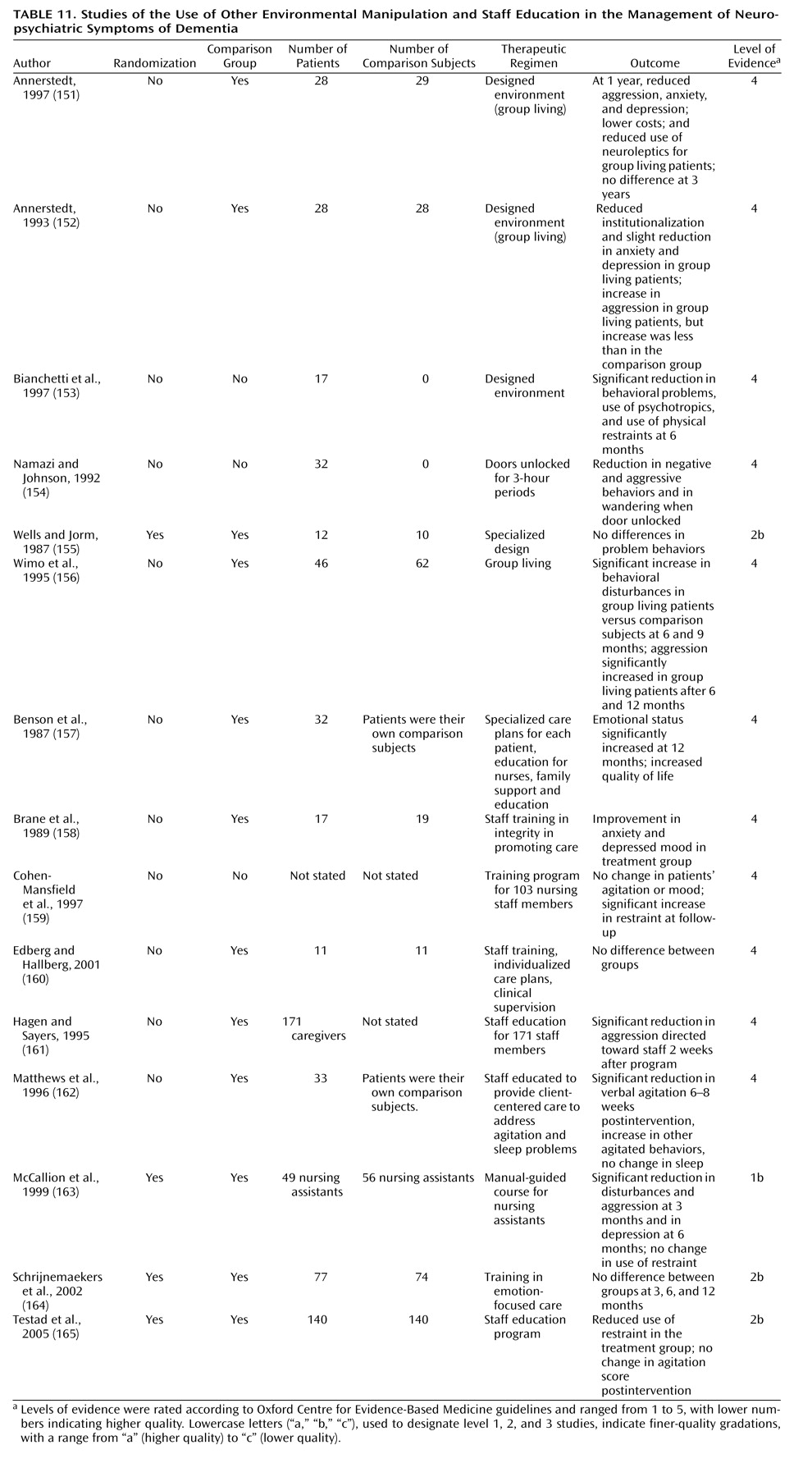
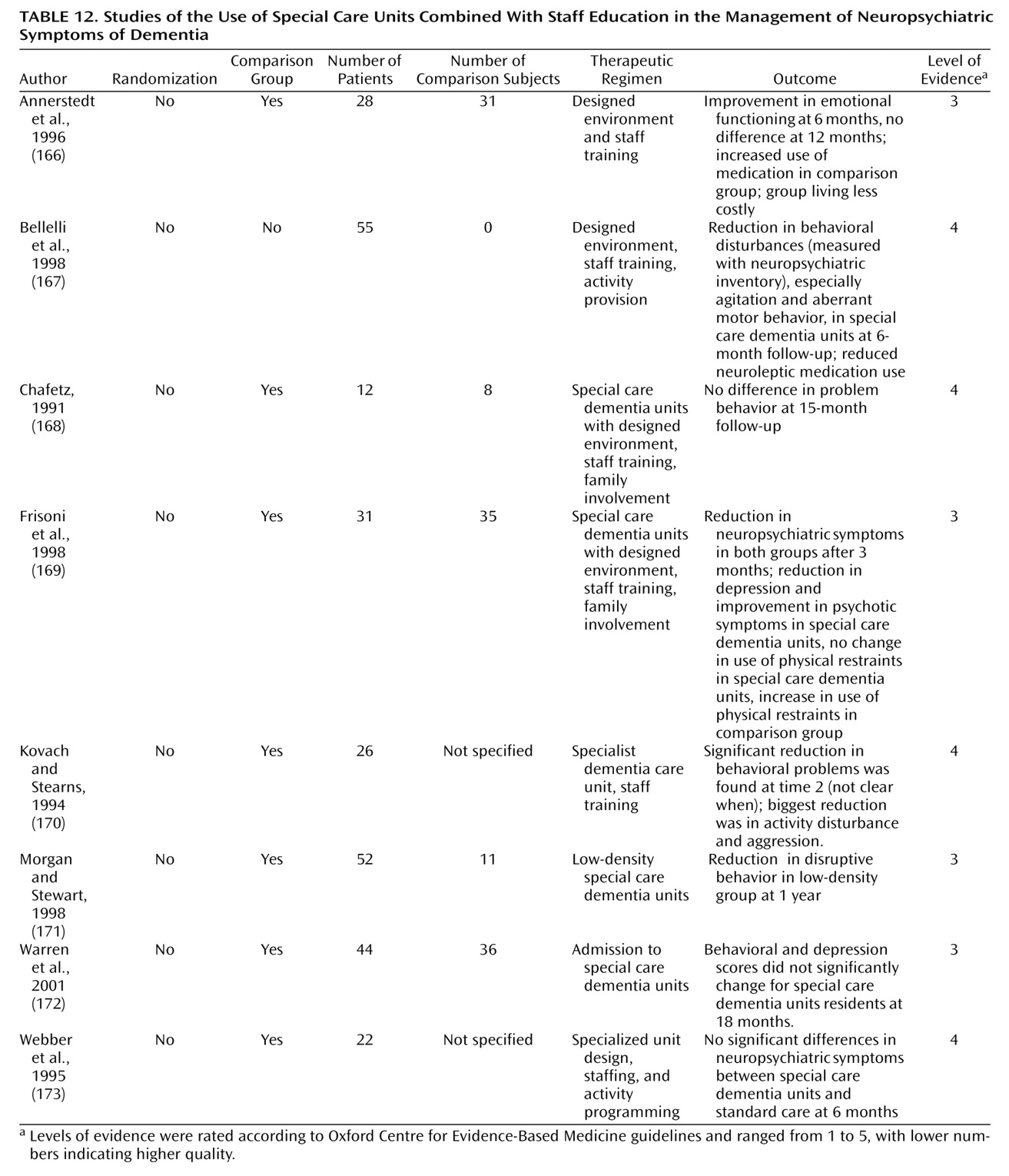
Footnote
References
Information & Authors
Information
Published In
History
Authors
Metrics & Citations
Metrics
Citations
Export Citations
If you have the appropriate software installed, you can download article citation data to the citation manager of your choice. Simply select your manager software from the list below and click Download.
For more information or tips please see 'Downloading to a citation manager' in the Help menu.
View Options
View options
PDF/EPUB
View PDF/EPUBGet Access
Login options
Already a subscriber? Access your subscription through your login credentials or your institution for full access to this article.
Personal login Institutional Login Open Athens loginNot a subscriber?
PsychiatryOnline subscription options offer access to the DSM-5-TR® library, books, journals, CME, and patient resources. This all-in-one virtual library provides psychiatrists and mental health professionals with key resources for diagnosis, treatment, research, and professional development.
Need more help? PsychiatryOnline Customer Service may be reached by emailing [email protected] or by calling 800-368-5777 (in the U.S.) or 703-907-7322 (outside the U.S.).

